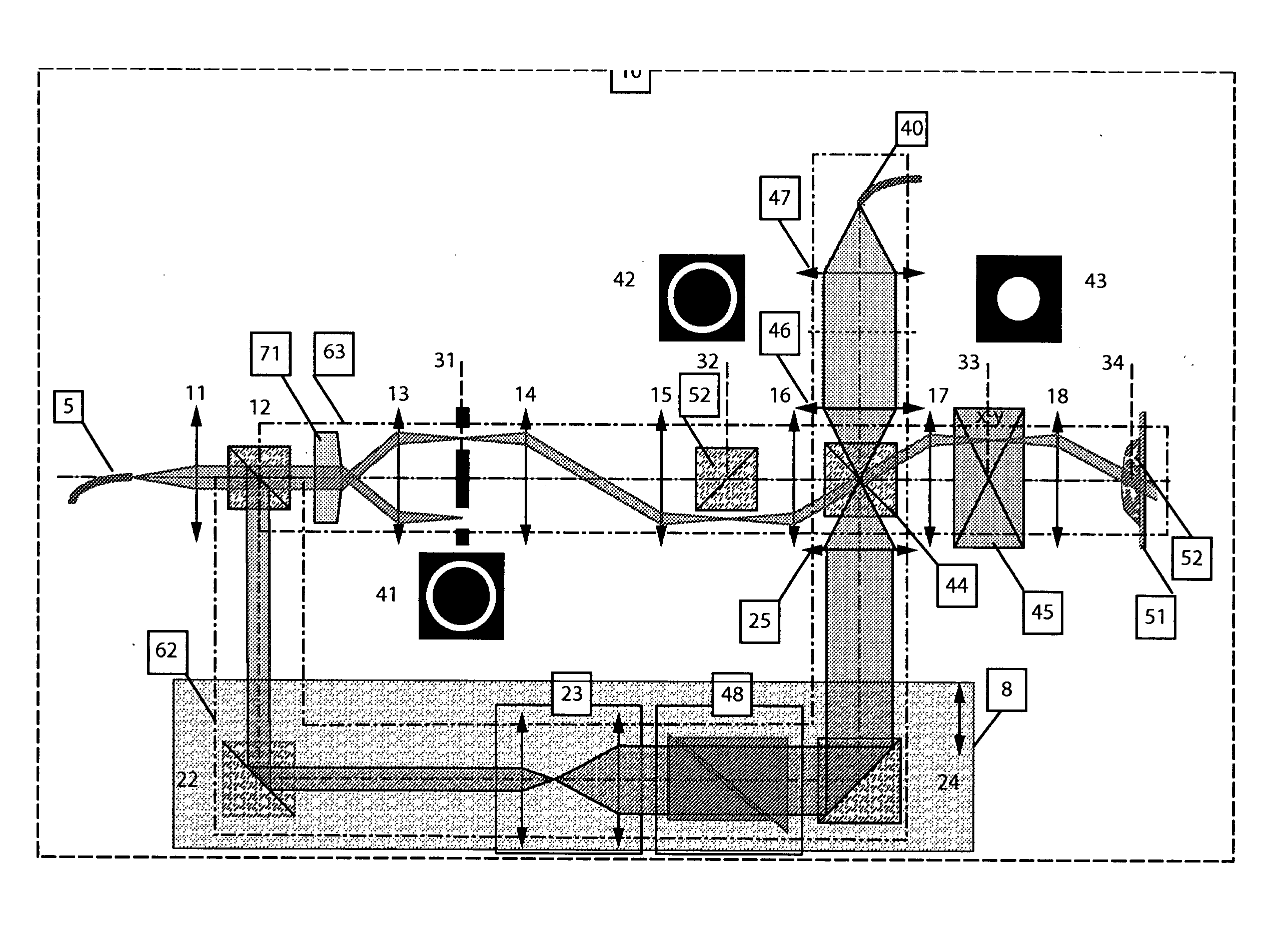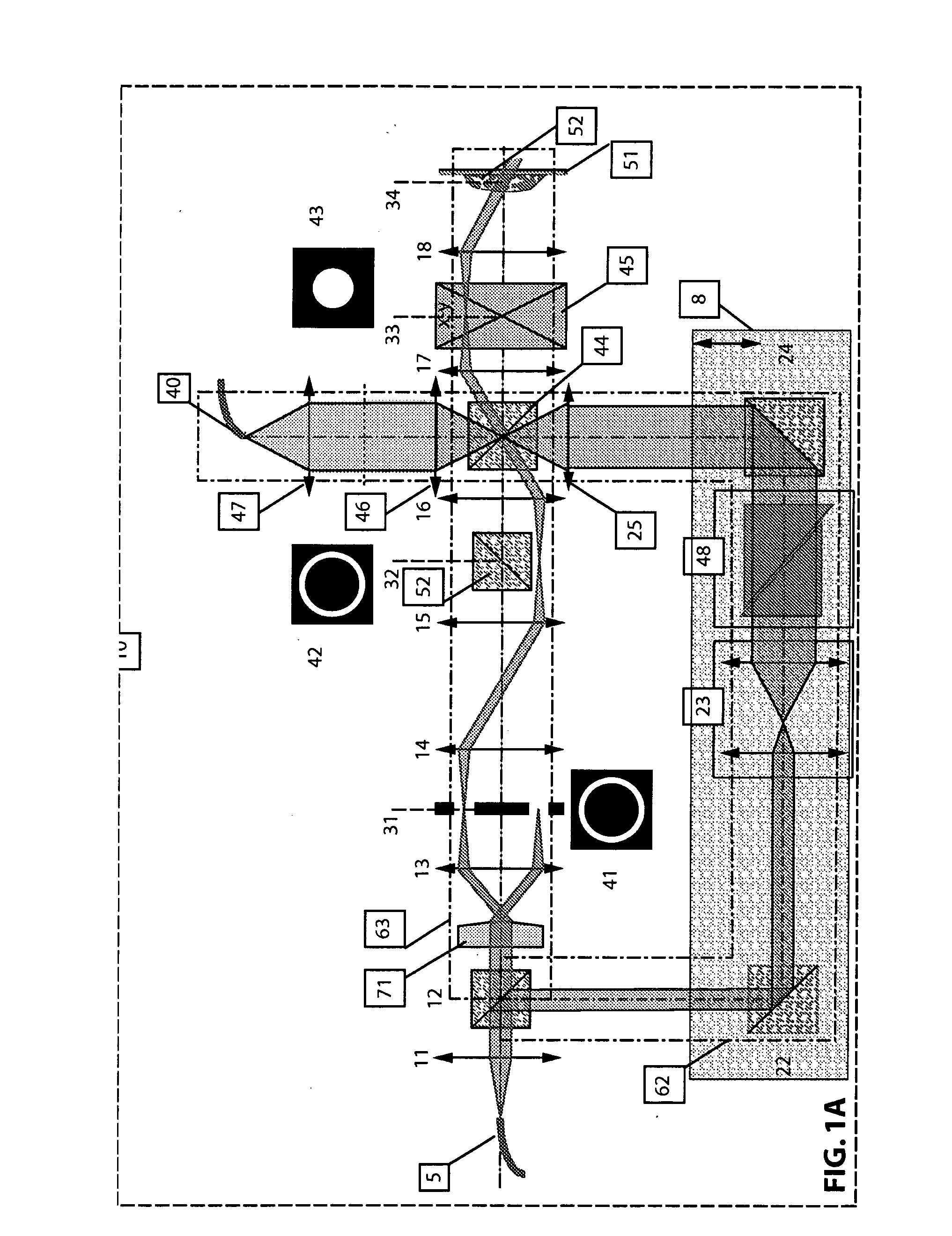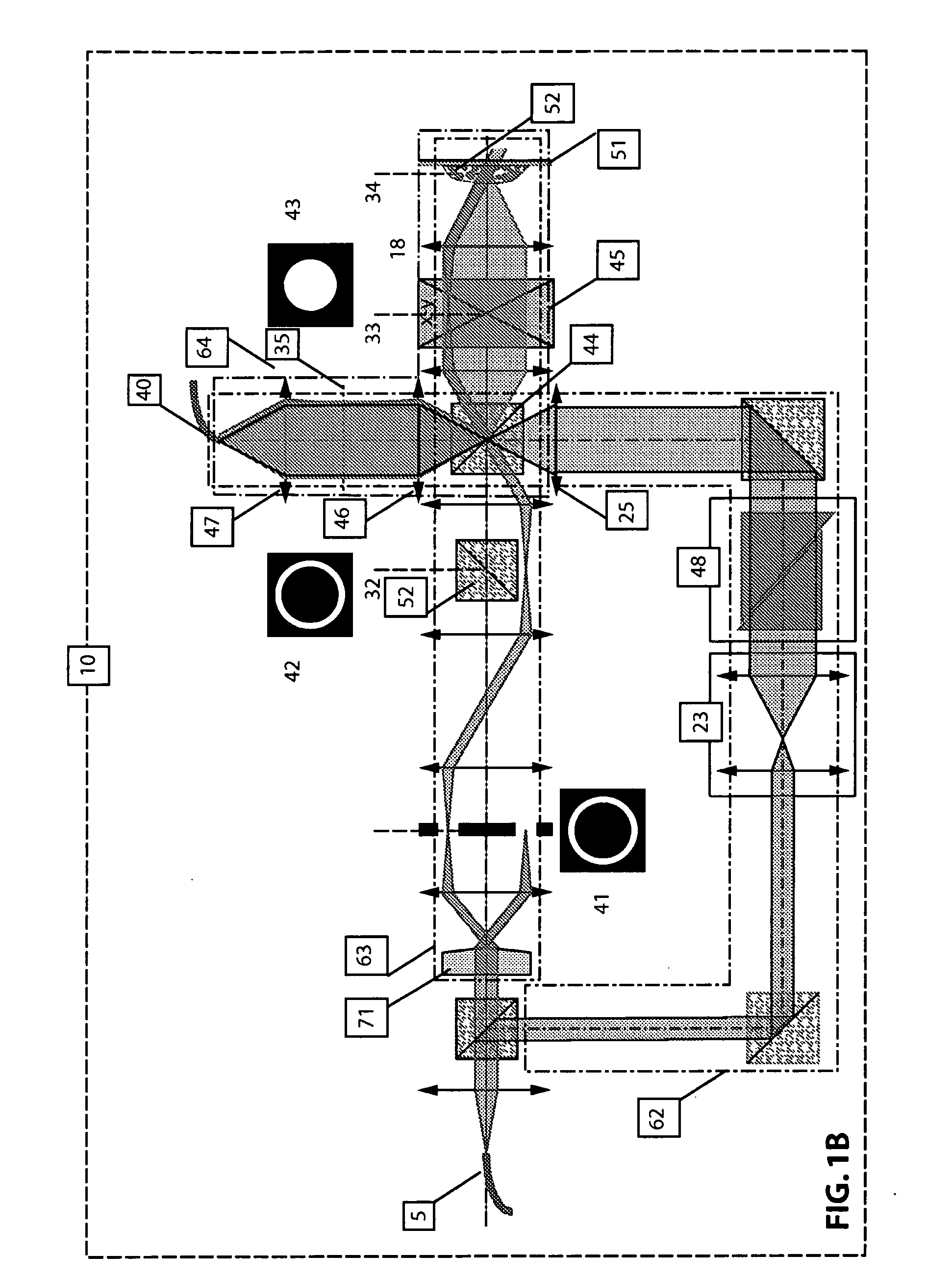Dark field optical coherence microscopy
- Summary
- Abstract
- Description
- Claims
- Application Information
AI Technical Summary
Benefits of technology
Problems solved by technology
Method used
Image
Examples
Embodiment Construction
[0050]Referring to FIG. 1A, a first Optical Coherence Microscope (OCM) 10 in accordance with one embodiment of the present invention is shown. The OCM 10 of FIG. 1A includes a first optical mean 12 to split the collimated light field coming from the source port 5 and being collimated by lens 11 into the reference arm 62 forming the reference light beam and into the illumination arm 63 forming the illumination light beam. The reference arm contains prisms or mirrors 22, 24 for redirecting the reference light towards the detection port 40. An optional telescope 23 allows readjusting the beam width of the reference light beam. The lens elements 14, 15, 16, 17 and the objective 18 are selected, aligned and positioned in such a way to allow the imaging of the back aperture 33 of the objective 18 into the respective conjugated planes 31, 32, so-called pupil planes. By crossing the axicon element 71, the illumination beam is reshaped in a dome shaped light field which is focused by the len...
PUM
 Login to View More
Login to View More Abstract
Description
Claims
Application Information
 Login to View More
Login to View More - R&D
- Intellectual Property
- Life Sciences
- Materials
- Tech Scout
- Unparalleled Data Quality
- Higher Quality Content
- 60% Fewer Hallucinations
Browse by: Latest US Patents, China's latest patents, Technical Efficacy Thesaurus, Application Domain, Technology Topic, Popular Technical Reports.
© 2025 PatSnap. All rights reserved.Legal|Privacy policy|Modern Slavery Act Transparency Statement|Sitemap|About US| Contact US: help@patsnap.com



